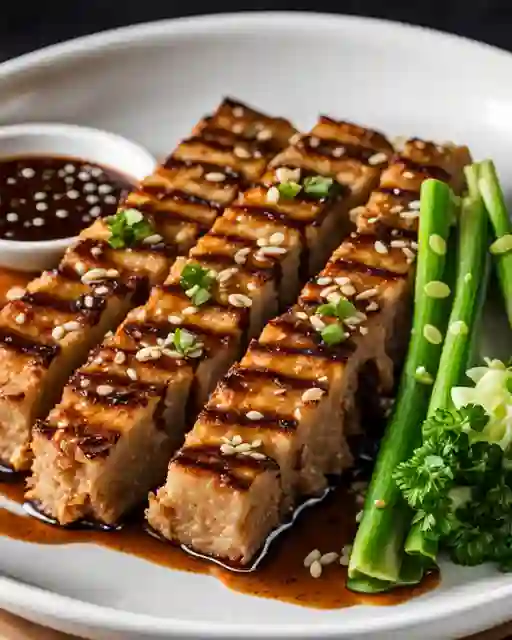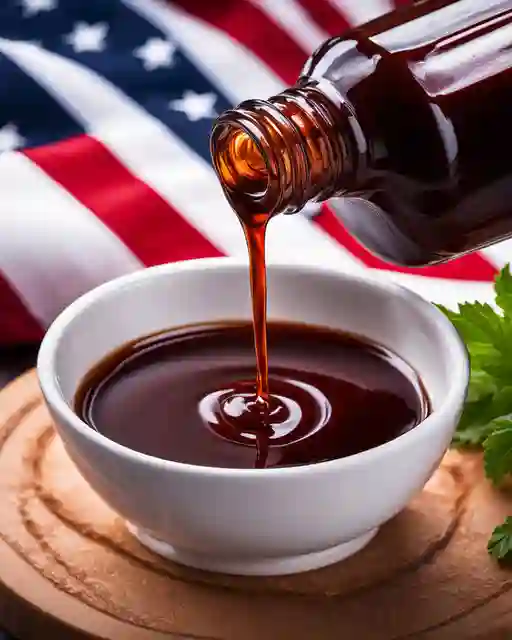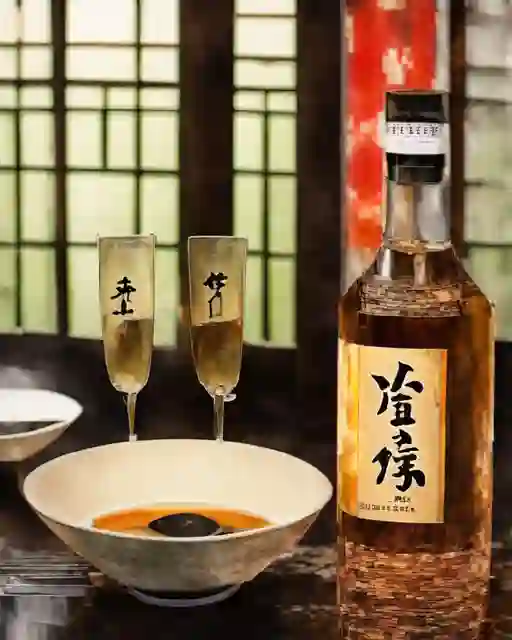What Seasoning Do They Use at Hibachi Restaurants?
Updated: 31 Mar 2024
101

Have you ever been to a hibachi restaurant and watched in amazement as the chef performed an incredible show at your table?
With the clanging of utensils, flames shooting from the grill, and an array of meats, veggies, and rice sizzling with irresistible aromas, it’s a dining experience like no other.
But have you ever wondered, what seasoning do they use at hibachi restaurants? That signature blast of bold, savory flavors doesn’t come from ordinary spices. There’s a special blend of seasonings and sauces that hibachi chefs use to make those grilled dishes taste delicious.
Table of Contents
Hibachi Seasoning Blend

One of the keys to that amazing hibachi taste is the signature seasoning blend.
While the exact blend can vary a little between hibachi restaurants, it usually contains salt, pepper, garlic powder, and onion powder as the core ingredients.
No matter the specific recipe, the hibachi seasoning blend creates that classic savory, slightly smoky flavor you associate with grilled hibachi dishes. The chefs liberally sprinkle this versatile seasoning over proteins like steak, chicken, and shrimp as well as veggies like onions, zucchini, and mushrooms before firing up the sizzling hibachi grill.
So when you taste those mouthwatering charred notes and bold umami flavors in your hibachi meal, you can thank the signature spice mix! It’s the seasoning that starts the flavor journey.
What Seasoning do They Use at Hibachi Restaurants?
1. Soy Sauce – The Base of Hibachi Seasoning

Another key ingredient that gives hibachi dishes their signature savory punch? Soy sauce! This salty, umami-rich sauce is a staple not just in Japanese cuisine, but in hibachi seasoning blends too.
Soy sauce is made from fermented soybeans, wheat, salt, and other ingredients. It has a deeply savory, almost meaty flavor often described as umami.
Soy sauce plays a vital role in making hibachi dishes taste delicious.
Just a small splash of soy sauce instantly makes foods taste better. The soy sauce allows the other spices and seasonings to stand out against its savory background flavor.
As the soy sauce-coated ingredients sizzle on the extremely hot hibachi grill, the natural sugars in the soy sauce lightly caramelize.
While soy sauce isn’t the most noticeable flavor, it is a key ingredient that lets the other seasonings blend into the wonderfully savory umami flavors we love in classic hibachi dishes!
2. Yum Yum Sauce

If you’ve eaten at a hibachi restaurant, you probably know and love the creamy, zesty sauce called Yum Yum sauce. This iconic hibachi dipping sauce is super popular and deliciously addicting!
Yum Yum sauce gets its fun name from how people react after trying it. This versatile sauce has a perfectly balanced rich, tangy, and slightly sweet flavor. The creamy mayonnaise base gets a savory umami boost from tomato paste. Garlic adds a zesty kick while paprika provides subtle sweetness and a bright orange color. Some recipes also have spices like cayenne for heat or dried herbs for extra flavor.
At hibachi restaurants, Yum Yum sauce is served in a little bowl next to your sizzling main dish for dipping and drizzling over everything. The flavors taste great with all the grilled hibachi items!
With its irresistibly delicious taste and ability to dip lots of foods in it, it’s no surprise Yum Yum sauce is such a beloved part of the hibachi experience. One bite and you’ll be saying “yum yum” too!
3. Teriyaki – The Sweet and Savory Hibachi Sauce

Teriyaki is one of the most popular and recognizable Japanese sauce flavors. At hibachi restaurants, this sweet-and-savory glaze does double duty as both a marinade and finishing sauce.
- The Teriyaki Marinade
Before hitting the scorching hibachi grill, meats like chicken, steak or shrimp get tenderized in a teriyaki marinade. The base is made from soy sauce, mirin (Japanese rice wine), garlic and ginger. As the proteins marinate, they absorb all those rich umami, sweet, and aromatic teriyaki flavors.
- Drizzled to Perfection
Once grilled, the meat gets bathed in a heavenly drizzle of freshly cooked teriyaki sauce. This final flourish coats every morsel in that signature shiny, glossy glaze. The luscious sauce also makes an appearance drizzled over hibachi rice and veggies for the full experience.
- What Makes Teriyaki So Crave-Worthy?
Soy Sauce Provides Savory Umami Depth.
Mirin Adds Natural Sweetness.
Garlic and Ginger Bring Aromatic Zing.
4. Spicy Mustard Sauce – Bringing the Heat

If you love a little heat, then you’ll want to grab the spicy mustard sauce at your next hibachi restaurant visit!
- A Tangy, Fiery Dipping Sauce
The main ingredients in spicy mustard sauce are mustard, soy sauce, rice vinegar and crushed red chili pepper or cayenne.
Vinegar brightens up the flavors and the chili pepper kicks things up a notch with pleasant heat.
- The Perfect Condiment for Dipping and Drizzling
At hibachi grills, small ramekins of spicy mustard sauce get served alongside the sizzling proteins, veggies, and fried rice.
Many hibachi chefs also drizzle it over grilled chicken, steak, or seafood for an explosive flavor finish.
5. Garlic and Ginger – The Heat Factor

While not necessarily spicy hot, garlic and ginger are two ingredients that add major punch and dimension to hibachi seasoning blends.
Both garlic and ginger are from the allium family of vegetables which are prized for their boldness. Garlic provides a savory, almost sweet intensity with hints of nuttiness. Ginger has a bright, spicy-sweet edge that is unmistakably zingy and warming.
In hibachi cooking, these two power ingredients work in tandem to season proteins and veggies before hitting the fiery grill. The natural sugars in garlic and ginger allow them to take on appetizing charred notes as they caramelize.
While grilling, the aromas of garlic and ginger waft through the air, building anticipation for the vibrant flavors to come in each sizzling bite. Their lingering heat brings a welcomed gentle tingle to the palate.
6. Mirin and Sake – The Japanese Touch

Two ingredients that give hibachi dishes their distinct Japanese flair are mirin and sake. These rice-based seasonings add a savory, umami richness you can’t get anywhere else.
The sugars in mirin allow it to delicately caramelize when used as a tenderizing marinade or brushed on as a glaze.
Sake is Japan’s renowned brewed rice wine with a light, crisp taste. While it has lower alcohol content than wines like rice or grape, sake still imparts a subtle tang and fruity notes when incorporated into cooking. As the alcohol burns off, the bright, complex sake essence remains – enhancing other flavors.
At hibachi restaurants, you’ll find both mirin and sake used generously. Meats often get marinated in a mixture containing these brews for hours, allowing the rich umami personalities to soak in.
Savory-sweet mirin-based teriyaki sauce makes frequent appearances drizzled over sizzling proteins or veggie medleys. A splash of sake might get deglazed into a pan sauce for an aromatic boost.
It’s these types of traditional Japanese brew ingredients that hibachi grillmasters use to create that trademark marrying of sweet, salty, and savory flavors. Each bite tastes unmistakably Japanese.
7. Sesame Oil and Scallions – The Aroma Boosters

While spices and sauces form the core of hibachi seasoning, two other ingredients take the aromas and flavors to new heights – sesame oil and scallions.
Sesame oil is pressed from tiny sesame seeds and has a distinctly nutty, slightly toasty aroma. At hibachi grills, the chefs often use sesame oil to grease the piping hot flat-top surface before cooking. As it heats up, the oil releases those recognizable rich, aromatic notes that then get absorbed by the sizzling meats, veggies, and rice as they cook.
Scallions, also known as green onions, are another hibachi staple that packs an aromatic punch. These vibrant alliums have long green stems with a mild onion flavor.
Both the white bulb bottoms and greenery on top get used. The pungent white portions provide zest when mixed into seasoning blends, while the green stems get finely sliced and sprinkled over dishes tableside for a fresh, herbaceous finishing flourish.
The wafting toasty sesame aroma combined with the bright, just-cooked scallions infuses every part of the hibachi experience with mouthwatering fragrance.
The Ultimate Hibachi Seasoning Recipe

Bring the flavors of the hibachi grill into your kitchen with this versatile seasoning blend! Use it as a rub for proteins like steak, chicken, or shrimp or even sprinkle it over veggie kebabs before grilling or broiling.
Ingredients:
- 2 tablespoons salt
- 2 teaspoons black pepper
- 2 teaspoons garlic powder
- 2 teaspoons onion powder
- 1 teaspoon paprika
- 1⁄2 teaspoon cayenne pepper
- 1 teaspoon white sesame seeds
- 1⁄2 teaspoon dried ginger powder
Instructions:
- In a small bowl, mix the salt, black pepper, garlic powder, onion powder, paprika, and cayenne pepper until fully combined.
- Use a spice grinder or mortar and pestle to lightly crush the sesame seeds and ginger powder. This helps release their aromatic oils.
- Add the crushed sesame seeds and ginger to the spice mix and stir everything together until evenly distributed.
- Store the hibachi seasoning blend in an airtight container or jar. It will keep for several months.
- To use, liberally season protein like steak, chicken, or shrimp with 1-2 tablespoons of the seasoning blend per pound before grilling, broiling, or sautéing.
- You can also toss the seasoning with raw veggies before roasting or use it as a flavor boost for fried rice or stir-fries.
With its savory, lightly smoky notes and hints of sesame and ginger, this homemade seasoning captures that iconic hibachi essence!
Make It a Hibachi Night In
With this delicious homemade hibachi seasoning blend, you can recreate the flavors of your favorite teppanyaki restaurant right in your kitchen! Here are some tips for an authentic hibachi night:
1. Grill It Up
Fire up your outdoor grill or indoor grill pan and get it ripping hot. Season proteins like steak, chicken, or shrimp with the hibachi spice mix and grill to perfection while veggies sizzle alongside.
2. Serve Hibachi-Style
For the full experience, serve your grilled meats and veggies on a sizzling hot platter or cast iron skillet. This keeps everything piping hot just like at the restaurant hibachi grills.
3. Make A Sauce Flight
No hibachi meal is complete without the iconic sauces! Prep simple dipping sauces like teriyaki, yum yum sauce, mustard sauce, and more in small bowls for drizzling over your protein and veggie platters.
4. Interactive Dining
Part of the hibachi fun is the chef’s entertaining grill performance. Get the whole family involved in cooking by grilling up meats and veggies right at the table or kitchen counter.
With a few simple tips and this seasoning, you’ll capture that irresistible hibachi flavor and experience right at home!
Final Words
From the signature seasoning blend featuring salt, pepper, garlic, and more, to the iconic sauces like teriyaki and yum yum, the flavors of hibachi cuisine are truly crave-worthy. You can recreate those bold and vibrant tastes at home by understanding the key ingredients hibachi chefs use – ranging from umami-packed soy sauce and savory-sweet mirin to aromatic sesame oil and fresh scallions.
While the exact blends may vary from restaurant to restaurant, combining these traditional Japanese seasonings, marinades, and sauces is what allows hibachi dishes to achieve that perfect harmony of sweet, salty, savory, and lightly charred notes.
So next time you fire up the grill, don’t be afraid to experiment with hibachi’s iconic ingredients. Your tastebuds will be transported directly to the lively exhibition of flavors found at your favorite teppanyaki grill house!
FAQs
What do they season a hibachi grill with?
Hibachi grills are often seasoned with sesame oil before cooking. The chefs coat the flat-top grill with a thin layer of sesame oil which adds a delicious toasted nutty aroma as the food sizzles on the surface.
What is the clear liquid they use at hibachi?
The clear liquid used at many hibachi restaurants is sake, a Japanese rice wine. Chefs will splash a bit of sake onto the grill which causes a dramatic flame up and imparts a subtle fruity flavor.
What do hibachi chefs squirt on rice?
When preparing fried rice at hibachi grills, chefs often squirt soy sauce over the rice as it cooks, allowing it to absorb those savory, umami-rich soy sauce flavors.
What do hibachi chefs squirt on the grill?
Aside from sake and soy sauce, you may also see hibachi chefs squirting a mist of water onto the hot grill surfaces using a squirt bottle.
How do you get hibachi flavor?
To recreate authentic hibachi flavors at home, use a blend of Japanese seasonings like soy sauce, rice vinegar, sesame oil, garlic, ginger, and rice wine vinegar. Marinating proteins and brushing on sauces while grilling mimics the process.
What do hibachi chefs put on the onion?
After expertly slicing the onion at your table, hibachi chefs will often stack the rings back together and let the onion sizzle with a buttery sauce or teriyaki glaze poured over the top.
How do you not smell after hibachi?
The smoky aromas from hibachi grills can linger after your meal. To avoid it, don’t keep the same clothes on and use a small amount of lemon juice mixed with water to wash your hands – the acidic juice helps remove odors.
Please Write Your Comments